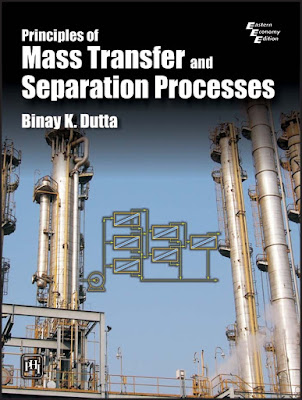Special Offer Book – 30% Off Using Promo Code
PRINCIPLES OF MASS TRANSFER AND SEPARATION PROCESSES By BINAY K. DUTTA, Ph.D. (IIT Kharagpur), is Chairman, West Bangal Pollution Control Board, Kolkata, India. He has over forty years of research and teaching experience in chemical engineering. He taught in Regional Engineering College (now NIT), Durgapur, University of Calcutta, University of Alberta, Canada, in Universiti Teknologi Petronas, Malaysia, and The Petroleum Institute, Abu Dhabi, UAE, besides working as Visiting Scientist in NIST (Boulder, Colorado), Stevens Institute of Technology (New Jersey) and NRMRL of US EPA (Cincinnati, Ohio). He was the Head of Department of Chemical Engineering (1994–1995) and the Director of Academic Staff College (2000–2005) of the University of Calcutta.
Professor Dutta has published extensively in international journals in several areas including transport processes, membrane separation, reaction engineering, environmental engineering, and mathematical modelling. He also holds several patents, and has authored Principles of Mass Transfer and Separation Processes (PHI Learning). He is a member of a number of professional institutions.
Professor Dutta was the President of the Indian Institute of Chemical Engineers in the year 2005.
This textbook is targetted to undergraduate students in chemical engineering, chemical technology, and biochemical engineering for courses in mass transfer, separation processes, transport processes, and unit operations.
The principles of mass transfer, both diffusional and convective have been comprehensively discussed. The application of these principles to separation processes is explained. The more common separation processes used in the chemical industries are individually described in separate chapters.
The book also provides a good understanding of the construction, the operating principles, and the selection criteria of separation equipment. Recent developments in equipment have been included as far as possible.
The procedure of equipment design and sizing has been illustrated by simple examples. An overview of different applications and aspects of membrane separation has also been provided. ‘Humidification and water cooling’, necessary in every process industry, is also described. Finally, elementary principles of ‘unsteady state diffusion’ and mass transfer accompanied by a chemical reaction are covered.
SALIENT FEATURES :
• A balanced coverage of theoretical principles and applications.
• Important recent developments in mass transfer equipment and practice are included.
• A large number of solved problems of varying levels of complexities showing the applications of the theory are included.
• Many end-chapter exercises.
• Chapter-wise multiple choice questions.
• An Instructors manual for the teachers.
CONTENTS
- Preface.
- Introduction.
- Molecular Diffusion.
- Convective Mass Transfer and Mass Transfer Coefficient.
- Interphase Mass Transfer.
- Gas–Liquid Contacting Equipment.
- Gas Absorption and Stripping.
- Distillation.
- Liquid–Liquid Extraction.
- Solid–Liquid Extraction.
- Humdification and Water Cooling.
- Drying of Wet Solids. Adsorption.
- Crystallization.
- Membrane Separation.
- Multicomponent Distillation.
- Transient Diffusion and Mass Transfer with Chemical Reaction.
- Appendix.
- Index.
To purchase the book at 30% Off click http://social.phindia.com/CeC7u5X1. Use Promo Code PHI#6663
